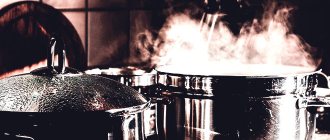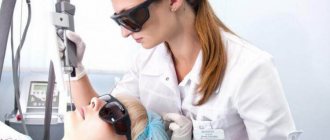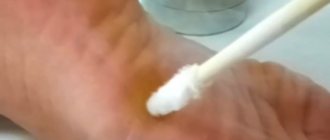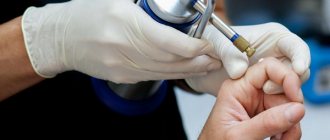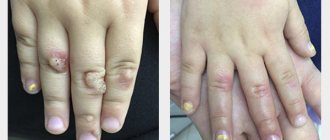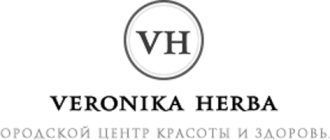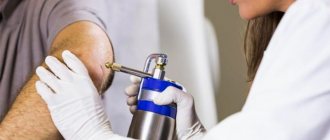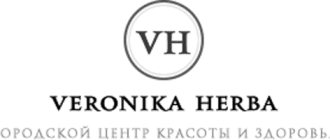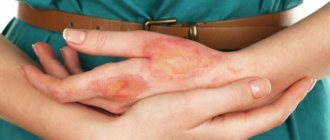Eye burns can be caused by both physical (high temperature, penetrating radiation, intense light radiation in the ultraviolet range) and chemical (all kinds of bioaggressive substances) factors. In most cases, the anterior segment of the eye and eyelids are affected, but radiation trauma can also have a destructive effect on the deep intraocular structures. The most severe and prognostically unfavorable burns are caused by the combined effects of several damaging factors simultaneously.
Symptoms
Depending on the specific damaging factor, the clinical picture of an ophthalmic burn may vary, but the most typical symptoms are:
- redness and swelling of the eyelids;
- swelling of the mucous membranes (conjunctiva of the inner surface of the eyelids and eyeball);
- general redness of the eye;
- intense, even unbearable, pain;
- blepharospasm (involuntary contraction of the muscles that control the movement of the eyelids);
- painful reaction to light, even soft and diffused;
- increased lacrimation;
- inflammation of the blood vessels of the eyeball;
- abnormal values of intraocular pressure (both hypo- and hypertension are possible);
— clouding of the cornea;
- a sharp deterioration in visual acuity and clarity, narrowing of the fields.
In case of radiation injury, symptoms may initially be limited to the latter symptom; with an infrared or laser burn, the affected tissue intensively scars, and vascular neoplasms appear (neovascularization).
There are four degrees of burn severity. Of course, the specific degree of damage depends on many factors (physical and/or chemical characteristics, total area of damage, duration of destructive effects, etc.).
Starting with a second degree burn, hospitalization is mandatory.
Therapeutic measures
It is advisable to treat superficial burns without signs of shock at home. Toileting a burned surface involves removing particles of exfoliated epithelium and washing the lesion with any antiseptic solution that does not have an irritating or significant painful effect. At the next stage, the burn blisters need to be dissected and the contents carefully removed.
Excision of the exfoliated epithelium of the blisters is not required, since in this case the risk of wound infection significantly increases. The burn bladder can be completely removed only when purulent contents appear . A bandage with a standard antiseptic solution can be applied to dried surfaces, but for a small area of damage, an open method of treatment is most often used. The healing period for second-degree burns is approximately ten days. Healing of first degree burns usually takes less than a week.
Treatment of more severe nitrogen burns will require serious therapeutic measures, which involve the use of the following medications:
- aerosol "Panthenol" with the active ingredient dexpanthenol has a pronounced anti-inflammatory effect, and upon penetration through the skin it synthesizes biologically active substances, thereby accelerating the wound healing process;
- Bepanten+ cream allows for complex treatment of burn surfaces, and also helps prevent bacterial infection of the wound;
- aerosol "Olazol" is a whole complex of active ingredients, represented by the antibiotic chloramphenicol, the anesthetic anesthesin, an effective stimulator of regeneration processes in the form of sea buckthorn oil;
- ointment "Radevit" with the main active components that stimulate the regeneration of the skin, allows you to stimulate metabolic processes in tissues, and accelerate healing.
In stationary conditions, therapy is carried out if the area of the skin lesion exceeds the size of the palm, the resulting burn is located on the face, genitals or mucous membrane, there are fragments of clothing at the burn site, the contents of the blisters contain inclusions of blood or pus. Particular attention should be paid to burns that are accompanied by a significant increase in body temperature, severe nausea or vomiting, as well as confusion or loss of consciousness.
The most severe consequence of a nitrogen burn can be burn disease, which is represented at different stages by a state of shock, acute toxemia and septicotoxemia, so severe lesions must be treated under the strict supervision of medical personnel.
Chemical burns
They occur upon contact with any substance (in any state of aggregation - from steam to solid crystals or powders) that corrodes or dissolves living organic tissue. The most common burns are caused by acids (usually in hazardous industries) and alkalis (usually in everyday life - ammonia, quicklime, caustic soda, etc.). In this case, a burn with a concentrated alkali, as a rule, is much more dangerous and severe than an acid one: the acid destroys only the volume of tissue with which it reacted, while the alkali continues to corrode the tissue and penetrate deeper and deeper until it is completely removed from the eye.
Therefore, in case of any chemical burns, the key importance in saving the visual organs is the speed and literacy of pre-medical medical (self) help.
What not to do?
When a nitrogen burn develops, the following activities are prohibited:
- Oils and oil-based products should not be used; they will aggravate the condition of injured skin.
- Alcohol-containing preparations can further injure inflamed areas of the skin.
- When piercing a blister containing pus, you need to carefully ensure that the needle is sterile to minimize the risk of infection.
- The bandage on the wound should not be too tight. Otherwise, it can significantly slow down the healing period.
- When the wound heals, do not rip off the scab under any circumstances.
To prevent nitrogen burn, you should not perform medical procedures such as removing warts with nitrogen yourself. To do this, it is worth choosing a qualified master with extensive experience.
Radiation burns (sun, welding)
Ultraviolet radiation (powerful light with an ultra-short wavelength invisible to the eye) primarily affects the skin of the eyelids, the conjunctiva and the cornea; the latter is the most dangerous. When damaged by light radiation in the infrared (thermal) range, the destructive flow reaches the retina and blood vessels.
These types of burns are usually associated with visiting solariums, unprotected presence in the area of electric welding or the action of a quartz lamp, as well as prolonged exposure to intense sun in blinding snow (especially in the polar regions). Symptoms usually develop several hours after the actual burn.
Radiation damage to the retina is a typical result of careless handling of laser equipment or unprotected contemplation of solar eclipses. In such cases, it may take several days for specific symptoms and/or decreased vision to develop.
Contraindications
Like any other cosmetic procedure, cryomassage also has certain contraindications that are unacceptable for its implementation. For example, women who experience excessive facial hair growth. Main contraindications:
- Oncology.
- Exacerbation of chronic diseases.
- Epilepsy.
- Mental disorders.
- Allergy to cold.
- Vascular atherosclerosis.
- Wounds and burns.
- Migraine.
- Purulent acne.
- Cuperosis.
- Herpes.
Cryomassage during pregnancy
Given the hormonal changes that occur during pregnancy, you should refrain from performing a massage with nitrogen. Often, the deterioration of the immune system during pregnancy can cause complications and risks.
First aid
Of course, the first and most urgent measure is to remove the eye from the influence of the damaging factor and deliver the victim to the nearest specialized medical facility as soon as possible.
At the same time, in most cases (EXCEPT FOR LIME BURNS!) you can rinse the eye with clean water and drip any antibacterial drops (Albucid, Levomycetin, etc.). It will be useful to apply a bandage (not pressing) to reduce the movement of the victim's eyes.
Traditional medicine recipes
It is important to use non-traditional remedies in combination with medications:
- When the injured area is very painful, a compress of chamomile and oak bark helps effectively. To do this, you need to mix the crushed raw materials 1 tbsp. pour 1 cup of boiling water. Leave the container for 30-40 minutes, cool to room temperature and apply compresses 3-4 times a day.
- Exposure to nitrogen can lead to the formation of a burn; in this case, applications of plantain juice are good for tissue regeneration.
- For better healing and recovery, aloe juice is used, which has an anti-inflammatory effect.
Treatment of eye burns
Further therapeutic strategy is determined by the nature of the lesion and complications that have developed. In different situations, antibiotics and anti-inflammatory drugs, antioxidants and vitamin therapy, regeneration stimulants, detoxification measures, and analgesics may be prescribed. In more severe cases, surgical removal of necrotic tissue, partial or complete transplantation of the cornea and/or conjunctiva, plastic surgery in the presence of a disfiguring eyelid defect, etc. are necessary.
Cryomassage technique
You should start cryomassage only after consulting a dermatologist or cosmetologist, who, during a thorough examination of the skin condition, will give his opinion and draw up a diagram of the required course. No special preparation is required before starting the cryomassage course. All you have to do is temporarily exclude scrubs, peels and not use any cosmetics on the day of the procedure. The procedure is performed lying down, the patient is completely covered, leaving only the face and neck, the hair is tucked under a cosmetic cap.
- To prepare the facial skin, wipe it with a special lotion.
- A special swab, which is immersed in liquid nitrogen, is passed along the main or selected lines of the face, with the exception of the perioral area and around the eyes, and a massage is performed with quick movements.
- At the end of the massage, a special cream is applied to the affected areas of the skin. Then let the skin calm down for 30 minutes, then you can go outside.
Burning warts with liquid nitrogen
Warts are found on almost every person's body. They can vary in size from minor to large formations. In some cases, warts bother a person or begin to grow, then they need to be removed.
In modern medicine, the most common method of getting rid of warts is cryotherapy.
Liquid nitrogen is able to penetrate into the deep layers of the skin and destroy pathological cells. Benefits of removing warts with liquid nitrogen :
- High efficiency of the method,
- Minimal risk of bleeding
- Minimal or no preparation required
- The procedure does not take long
- Scars do not often remain.
The procedure is performed under local anesthesia. As soon as the anesthesia has taken effect, cauterization begins.
A stick with a cotton swab is dipped into a cylinder of liquid nitrogen. The exposure time of nitrogen on the wart is about 30 seconds. The manipulation is repeated several times until the formation is completely removed.
After the manipulation, a small scar remains, which quickly becomes invisible. If the wart is large and deep, then several procedures will be required to completely get rid of it.
Cryotherapy technique
Today, cryotherapy is perhaps the only method that allows one to avoid surgical treatment and at the same time preserve the functions of the ENT organs.
Using a special tool - an applicator, the fabric is sharply cooled for 10-15 seconds.
The procedure is performed on an outpatient basis and lasts several minutes. Within a few minutes after the procedure, the person experiences a feeling of discomfort and pain. The patient's condition after the procedure is usually satisfactory.
The huge advantage of cryotherapy is that due to the immunostimulating effect of ultra-low temperature, rapid tissue regeneration occurs, and the condition of healthy surrounding tissues also improves. Local and general immunity is noticeably increased.
Causes of burn injury
There are several reasons for this injury and they are all based on non-compliance with the rules for working with liquid nitrogen and non-compliance with safety rules. Actions that lead to burns:
- Touching exposed parts of the body to objects cooled with liquid nitrogen,
- Refusal to use personal protective equipment (gloves, mask, goggles). In this case, nitrogen, once on unprotected areas, quickly destroys tissue,
- Use of faulty equipment during cryotherapy. If there are chips or cracks, it is necessary to inform the person responsible for the equipment about this and draw up a written report or statement. It is dangerous to work on such equipment, as both the worker and the patient can get burned.
- Negligent attitude towards one’s duties and untimely inspection of equipment,
- Neglecting to ventilate the room where they work with nitrogen. This can cause damage to the mucous membranes of the eyes and upper respiratory tract$
- Violation of the technique of carrying out medical and cosmetic procedures.
It should also be remembered that the removal of cosmetic defects should be carried out only in specialized medical or cosmetology organizations that have the appropriate certificate.
Preventive measures
You can avoid developing a burn with liquid nitrogen by following simple preventive measures.:
- Compliance with safety rules when working with liquid nitrogen. This applies to both industry and medicine,
- Use of personal protective equipment (gloves, goggles, gas mask, mask, respirator),
- It is good to ventilate the room in which you work with liquid nitrogen,
- Contact a cosmetologist only in specialized clinics and salons. Only a good specialist will be able to carry out the procedure painlessly and without serious consequences,
- Seek help from a doctor in a timely manner. You can avoid complications after a burn only by following all the recommendations of a specialist,
- Monitor the serviceability of equipment,
- Compliance with cryotherapy techniques.
